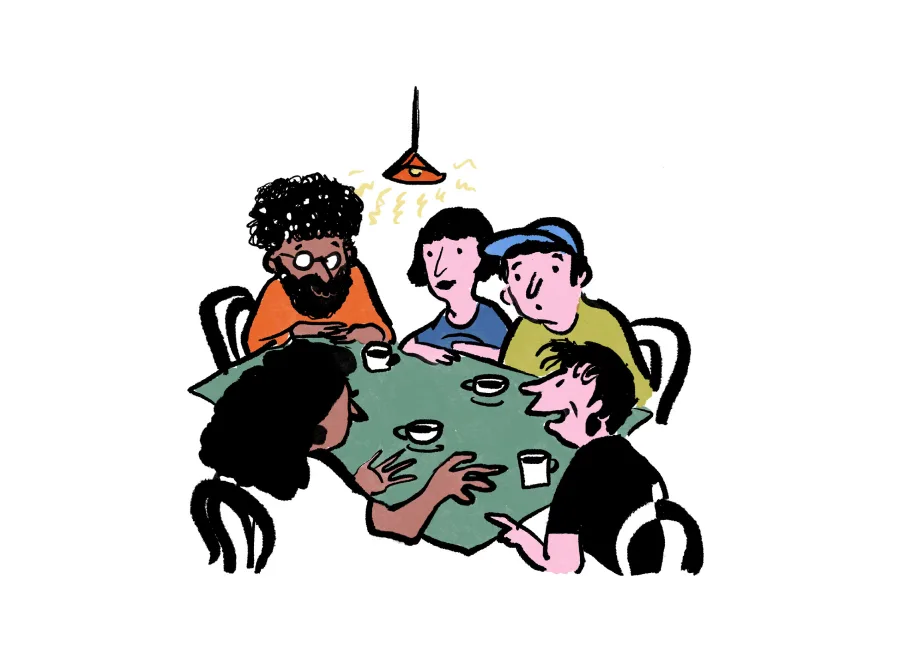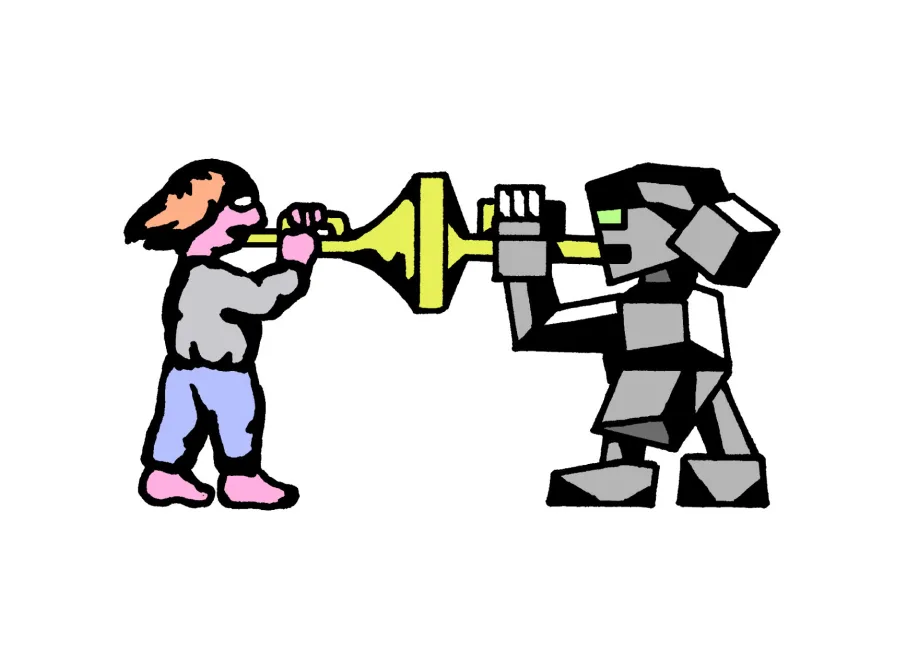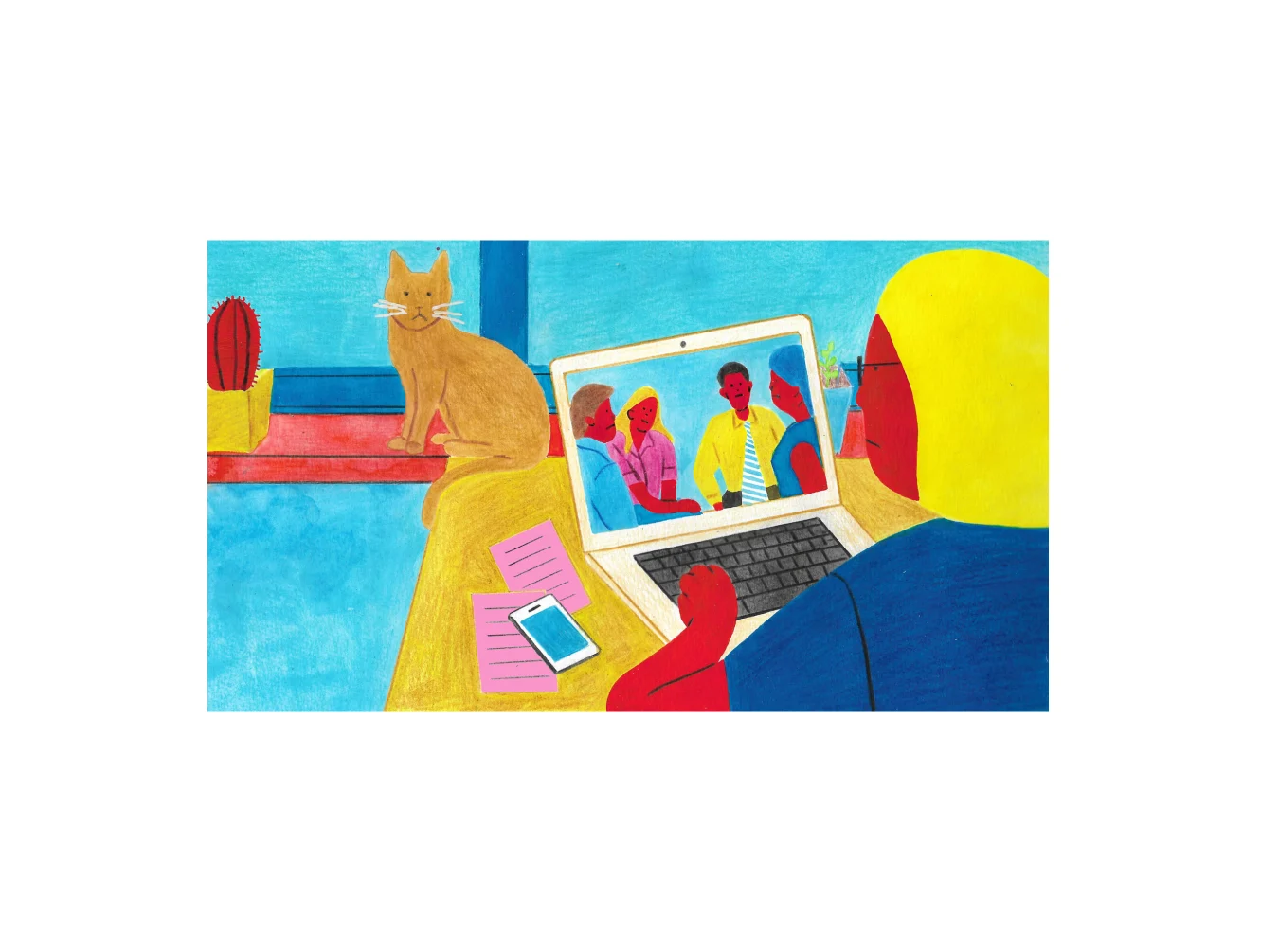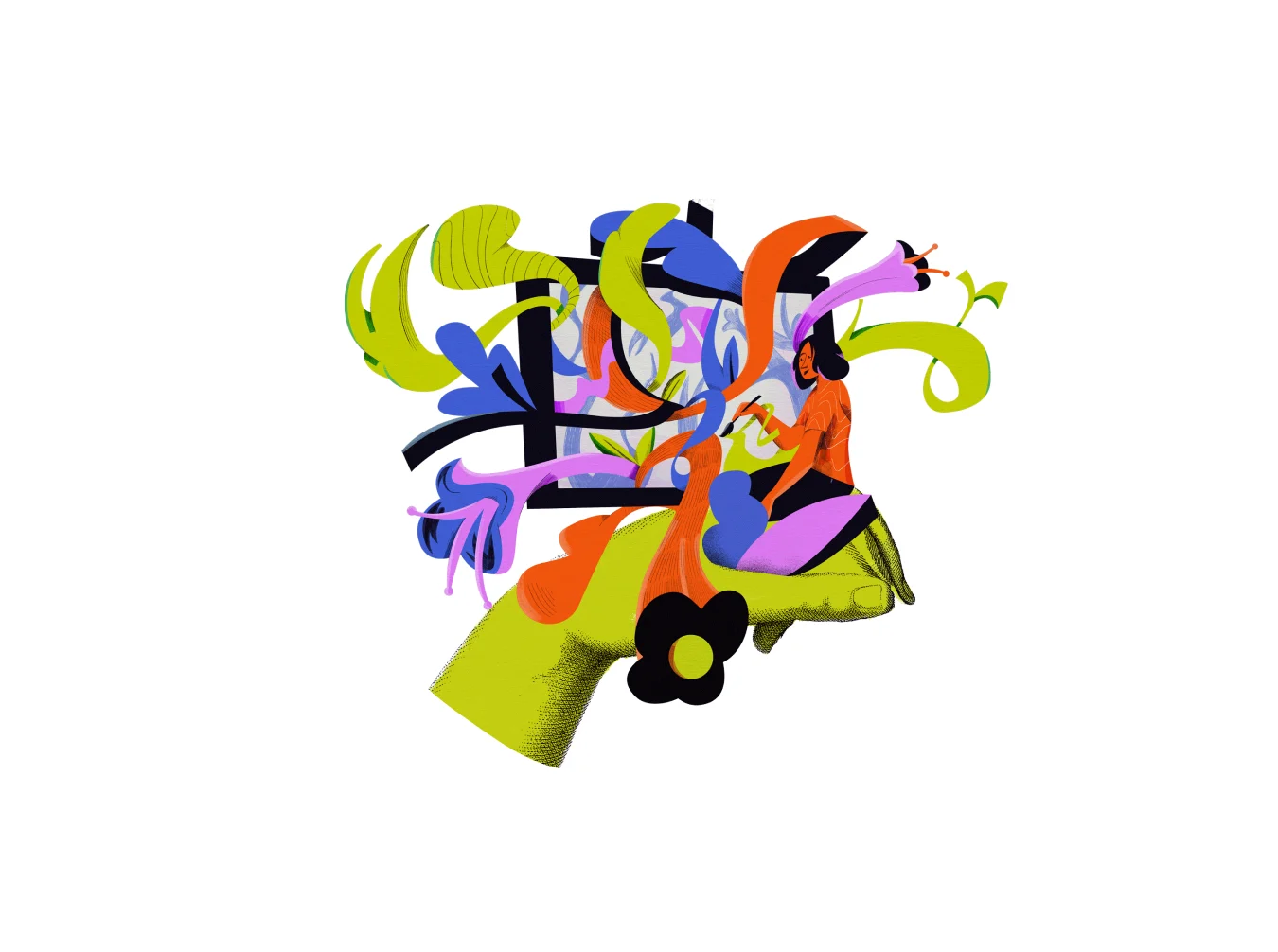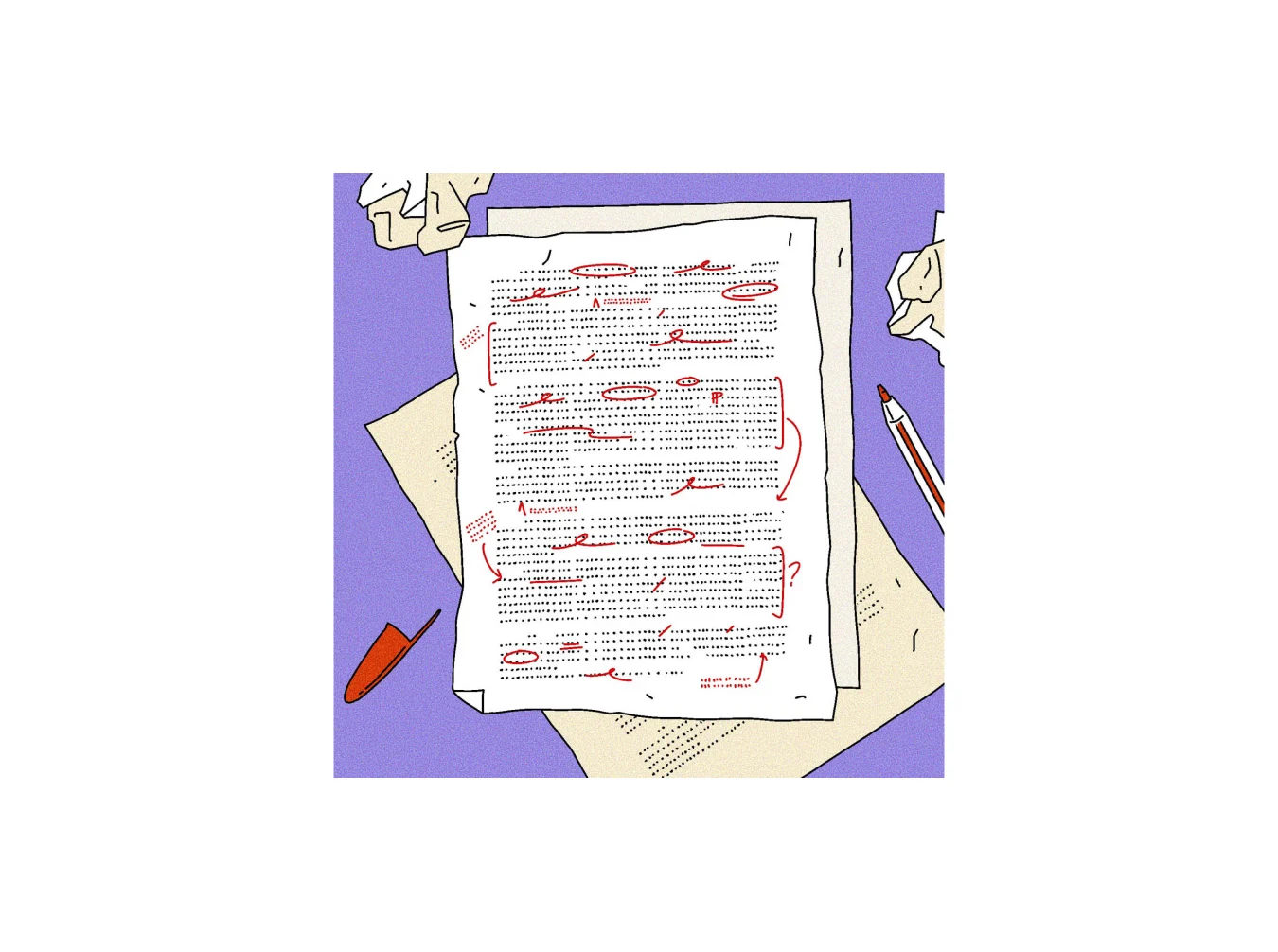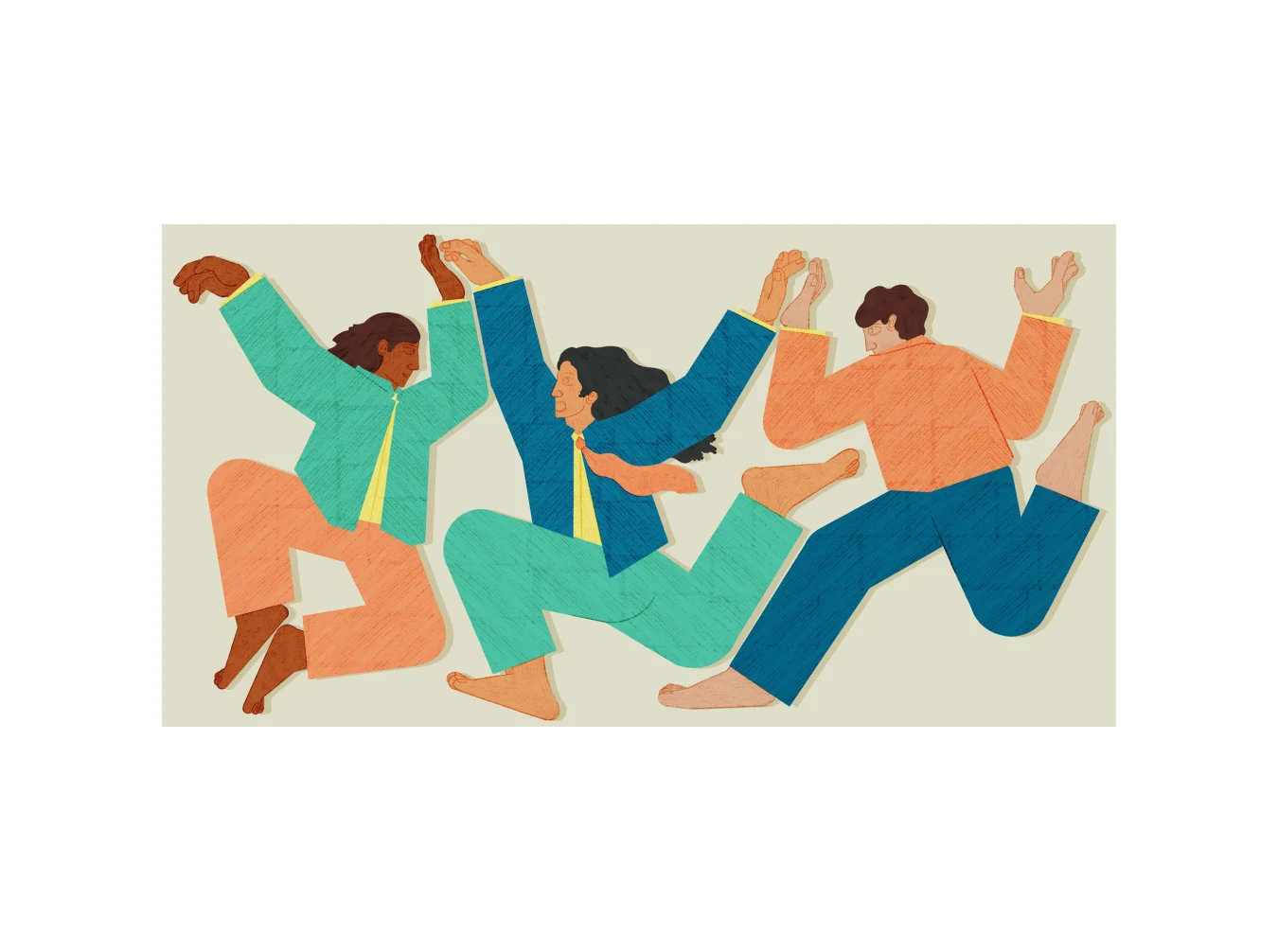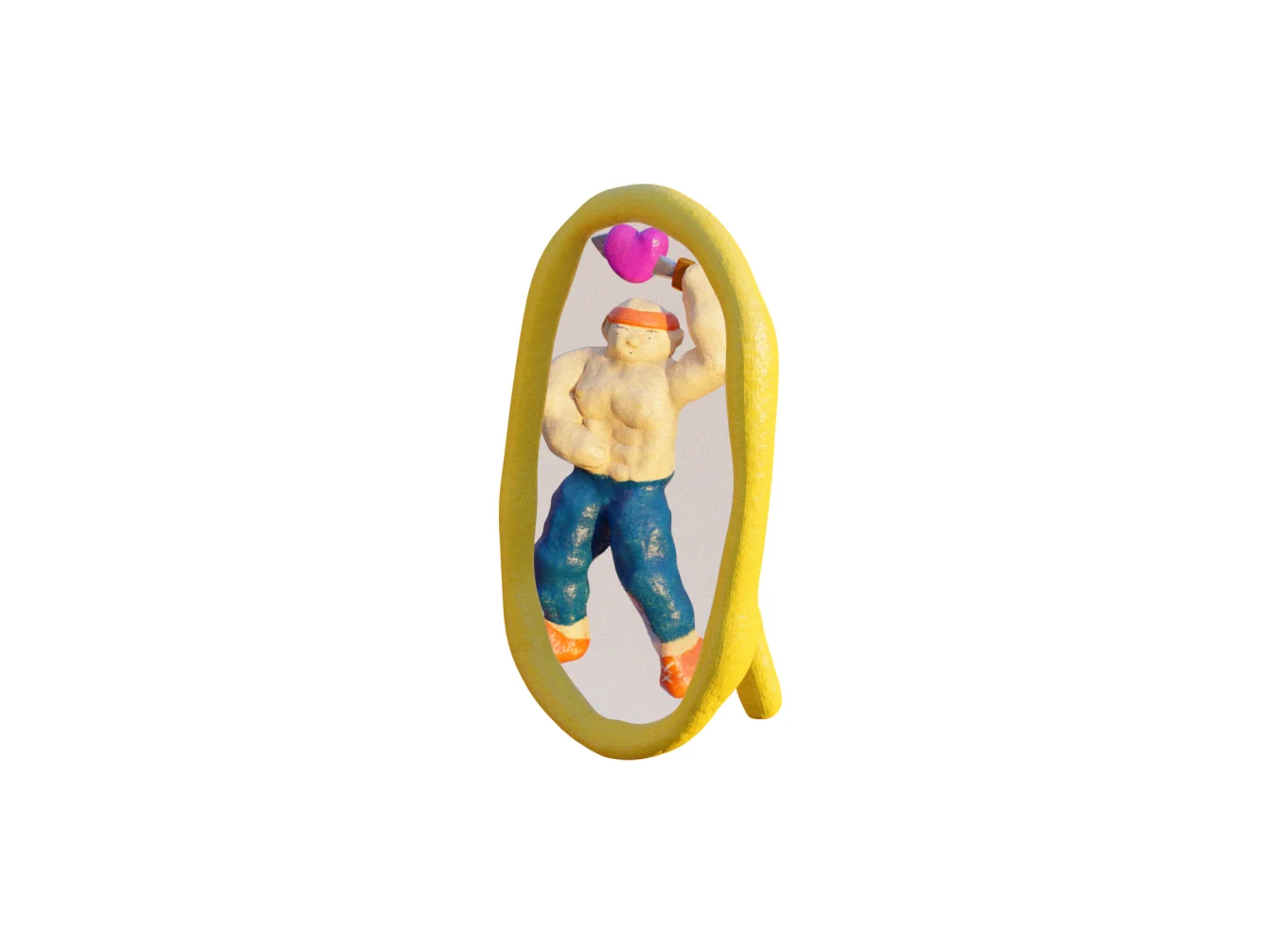
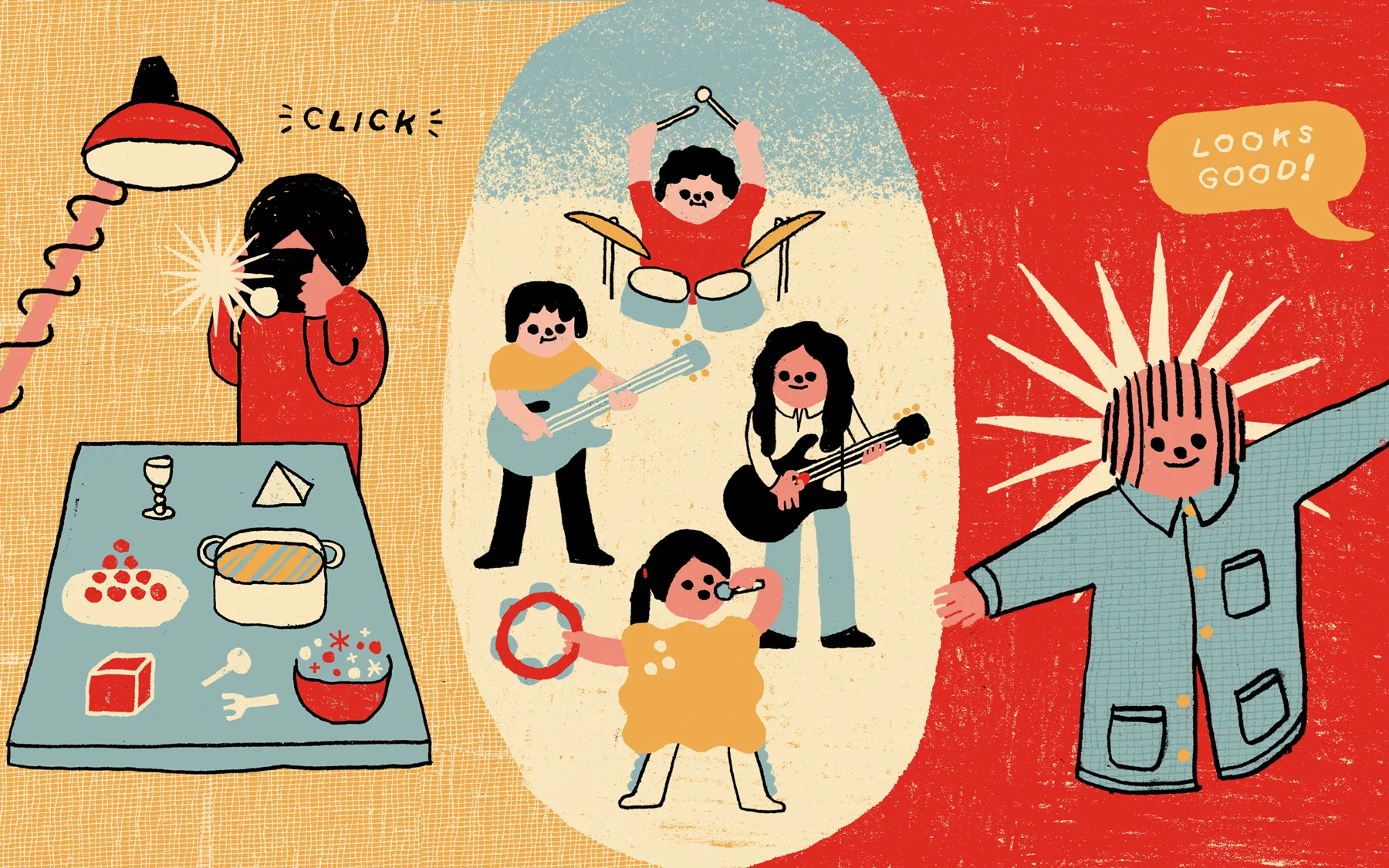
In some ways, with the prevalence of email newsletters and social media, it’s never been easier to start your own independent business. That said, it’s never easy, and there certainly isn’t an official handbook. Here, James Cartwright speaks to people who dreamed of turning their passion into their day-job and finds out how it’s done, from those who have actually gone and done it.
Illustrations by Hiller Goodspeed.
In 2004, Chris Tipton moves down to London from Shropshire in the hope that he'll be able to see some great bands in the capital. His local music scene is so sparse that it barely exists and he's hung all his hopes on a new life among the bright lights of the big city. On arrival he is bitterly disappointed. "I'd chosen to go to university in London just because I was desperate to see some live music," he says. "But I went to all these shows and they were super boring, staid and self-conscious affairs."
So Chris does the only sensible thing he can and sets up his own promotion company to put on his own shows. He starts with Deerhoof, one of the weirdest bands to come out of San Francisco who are currently on tour in Europe. To his frustration they have no plans to play in the UK, so he gives them a call, books a venue and lures them to London with the promise of a modest fee and a slap-up Italian meal. He covers his costs, makes a little bit of cash for the band, but more importantly, Chris and his pals get to see one of their favorite acts for free. An idea begins to form: Chris sets up a company to put on gigs in London. He calls it Upset the Rhythm. A few years later it spins off into a record label, too.
They say that if you love what you do, you never work a day in your life. Nonsense.
It's 2013: LinYee Yuan is working for the industrial design platform Core 77 and is sent to Milan to report on Salone del Mobile, one of the world's biggest and busiest design fairs. In amongst literally thousands of chairs and coffee tables she notices some exciting food design projects, but neither her editors, nor anyone else in the industry, is paying them much attention.
It doesn't make sense to her; food design seems like an exciting new field with the potential to make a huge difference to two of the biggest crises facing modern society; climate breakdown and ecosystem collapse. With no platforms covering her pitches on the subject, she throws together a Wordpress site with the help of a new acquaintance and begins writing about the burgeoning field in her spare time. She calls the project MOLD. By 2016, enough people have shown an interest that she thinks it’s time to turn the website into a print magazine. So, she does.
By chance she meets Johnny Drain, a biochemist and fermentation specialist who’s done some stints at Noma – “the best restaurant in the world” according to many – who signs on as her co-editor, then pesters Eric Hu, her favorite designer to art direct the issue before setting about funding the whole thing on Kickstarter, raising over $37,000 to cover the first print run and a modest wage for her team. Today she’s five issues in.
Now we're in 2019: Becky Okell and Huw Thomas are working in marketing for Nike and Hiut Denim respectively. They meet by chance at a Do Lectures workshop that Huw is running, share a charged embrace, then keep in touch daily while Becky goes surfing in Sri Lanka. When she returns, they go on a three-day date in north Wales and get to chatting about vintage workwear.
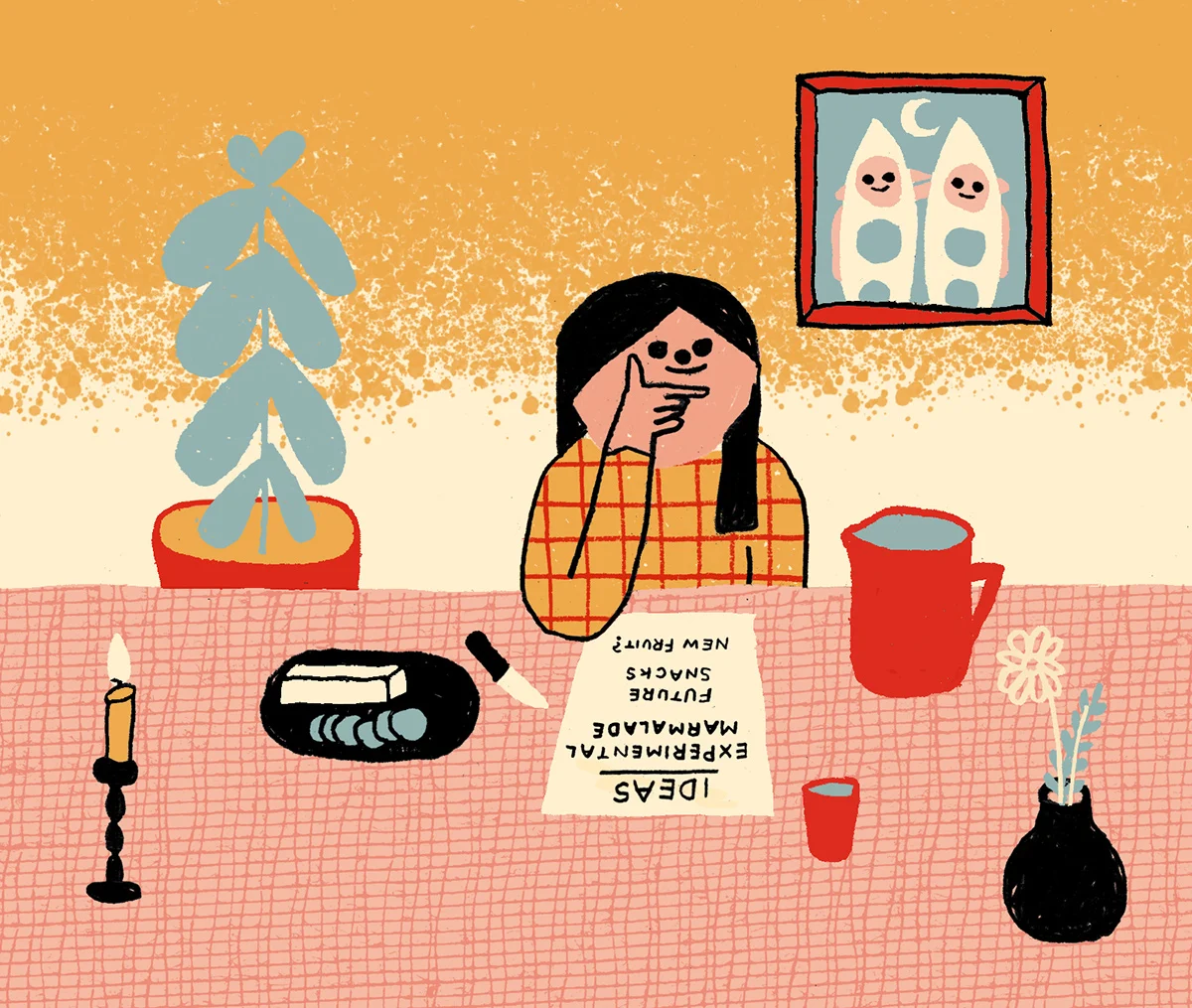
Workwear has been a staple of fashionable wardrobes for a good few years, but neither of them has been able to find a jacket they really like, made with the right materials and attention to detail, with truly sustainable credentials and no production waste. You get the idea of where this story's going. Sure enough, they decide to bring this jacket into existence and start making plans to build their own fashion brand, Paynter Jacket Co., in addition to throwing themselves headlong into a new relationship.
Paynter will do things differently by carefully overseeing all aspects of the garment’s creation and selling jackets in limited runs in advance of production. By taking the money upfront they won’t produce any jackets that won’t sell, and they can ensure their cashflow runs smoothly by never tying up liquidity unnecessarily in materials and stock. The first run of jackets sells out in 14 minutes, and by the third-and-a-half run they’ve got that down to an absurd 86 seconds.
Sadly these three stories don't intertwine in a beautiful Magnolia-esque narrative, they just lay out the origins of three creative businesses – from brand new to impressively old – that have all been built from the ground up. Neither Upset The Rhythm, Mold nor Paynter began life as a startup with angel funding, or benefited from a hefty wedge of family cash to get them off the ground. All three have been built in their founders' spare time, taking months and years of hard work to become a viable business. So how have these three sets of business founders and owners made it work?
“Sheer bloody-mindedness and painful sincerity,” says Chris.
“I'm kind of unrelenting,” says LinYee.
“It became our obsession,” say Becky and Huw, “and we had to make it work.”
As far as I can tell, starting your own business is a fools' errand; one beset by constant unexpected challenges in addition to the constant expected challenges. But it also seems to offer the folks that do it a huge amount of satisfaction, so long as the business plan is about more than just exploiting a gap in the market. Whether it’s a record label, magazine or fashion brand, there are some pretty universal lessons to running a successful DIY business of your own.
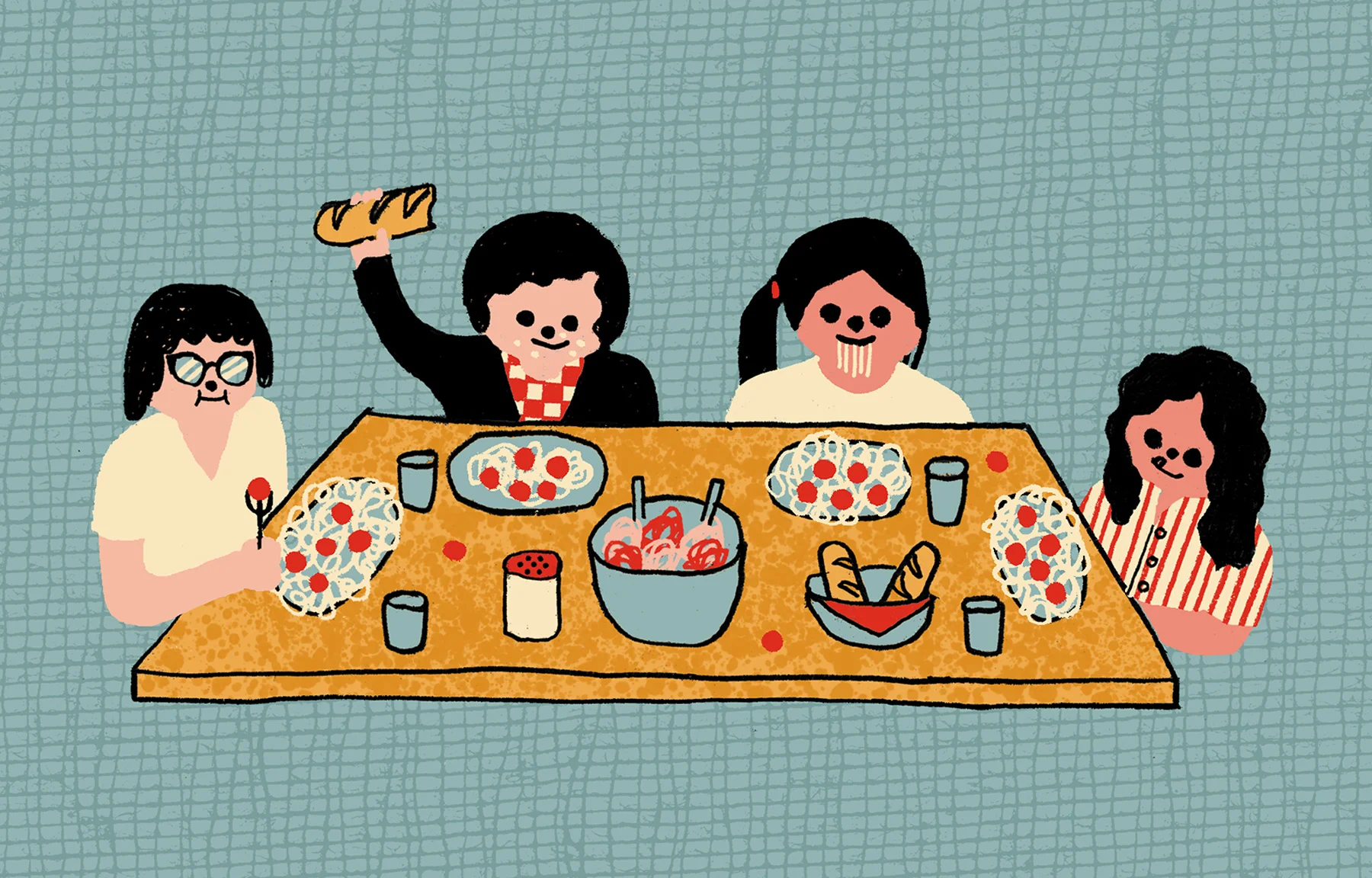
Naivety can be a huge an asset
“I think it’s good to be naive to what people normally do,” says Chris. “Like writing to a band directly and saying, ‘Please play, we'll take you out for an Italian meal and give you all the money that the show makes, and I'm sure it'll be good because we’ve got 10 friends and they're all going to come,’ probably wasn’t the most professional thing I’ve ever done, but it worked.”
After the success of the Deerhoof gig, Chris began to produce live shows on a regular basis, rarely considering whether he or anyone else he worked with would take home any profit. Then one day, the Evens (a band made up of ex-Fugazi frontman Ian Mackaye and his partner Amy Farina) agreed to play a show for Upset the Rhythm at St Cyprian’s church in Marylebone. At the end, Chris handed them the takings from the night and they went off by themselves for a minute, then came back and handed over 50% of the profits.
“They were just like, ‘We don’t want all the money from this and you’ve been wittering on about starting a label, so take some of this and use it to put a record out.’ And that was just like this kingmaker moment. I would never have thought of taking money from shows and putting it into starting a label.
“Nothing was ever really planned or coherently strategized. We put out records because we’d put on shows with people, or because a band had crashed at our house. I know a lot of bigger record labels are really streamlined; develop an artist, assign them a producer, get a star designer onboard and then release the record in two years’ time when the timing is perfect. But obviously, all of that is out of reach for a lot of smaller labels so you just have to make do.”
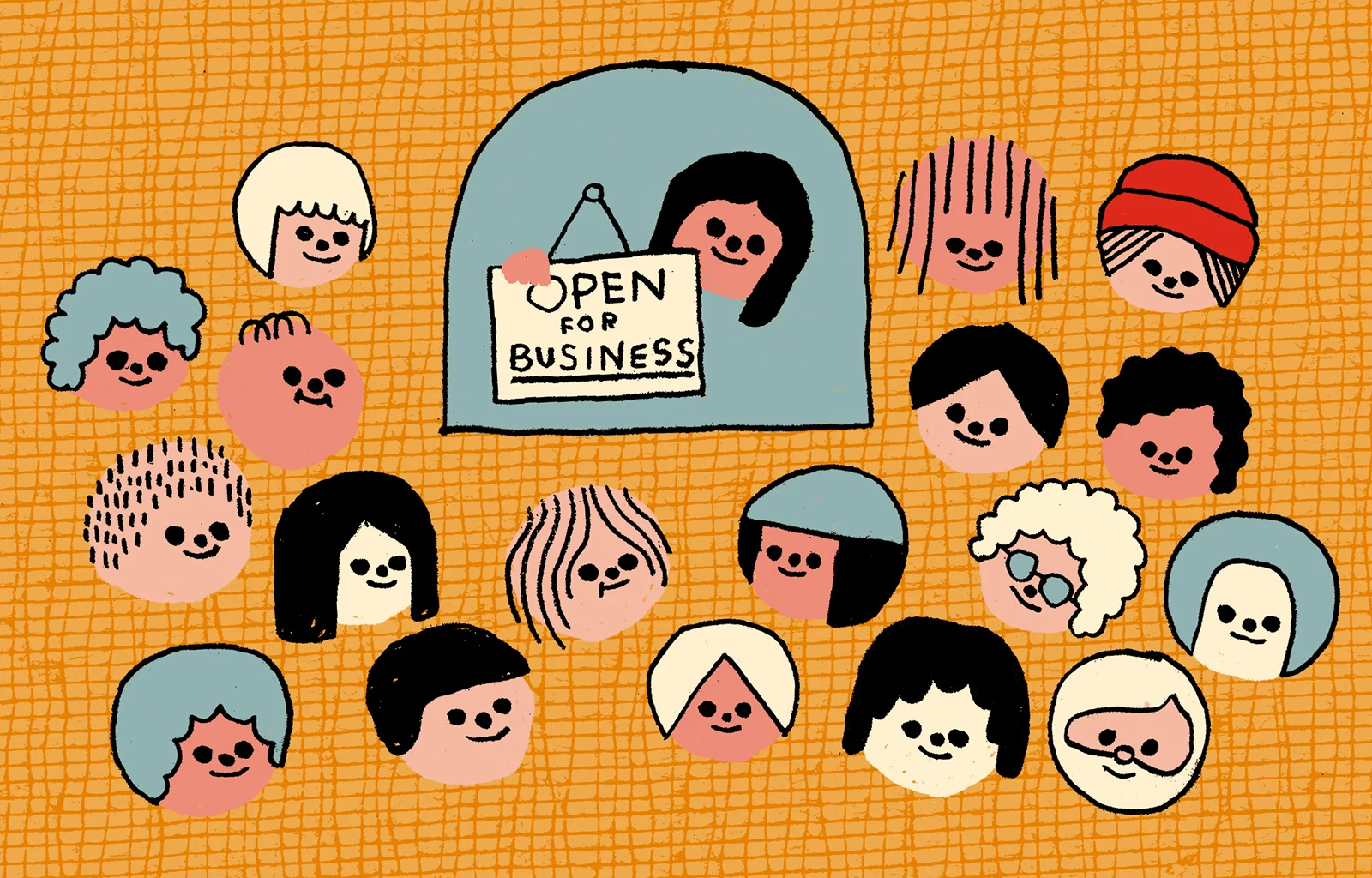
Money or values?
Becky and Huw like to keep a few important questions in mind at all times: “Rather than plot growth financially or even with social metrics, we ask ourselves questions like, ‘Are our customers happy? Do we feel creative? Could our product be better? Do we still feel excited? Are we challenging our industry? Are we learning?’ If the answer is yes, then things are going well. If one area isn’t so strong, that’s something to work on next.”
Sounds simple enough, but prioritising values over cash doesn’t make things any easier, particularly if you know from the outset that your business won’t ever turn a big profit. Magazines, for example, are notoriously difficult to turn into a steady income, but LinYee knew when she started Mold that this would be the case.
So before you try to simply plug a gap in the market, take a moment to wonder whether that gap is something you’re actually interested in. If not, move on.
“I come from a media background where I know that print magazines don't make any money. So I went into the experience knowing that Mold would basically be, like, the most expensive calling card I could make."
In order that the calling card didn't bankrupt her, LinYee set clear parameters on the lifespan of the project so that she could budget it out clearly and know that it wouldn't be all-consuming forever.
“The idea of making a print magazine in perpetuity was really daunting, and I just felt like it was too much to ask of myself and other people. There's no reason to commit to publishing in print forever, so I decided I wanted to publish six issues and call it a day.” She’s now in the process of expanding her small media company to include a not-for-profit, again choosing values over money as the driving force behind her work.
Find your niche
Chris agrees. Finding a niche is essential: “I think what was instrumental in Upset the Rhythm existing was a spectacular vibe of showmanship with all of the early shows. Nobody else was doing that. And then it transitioned into the records, too. Without the energy of those live shows, we'd never have picked up the reputation we did and been able to put out records. Everything else has just happened on a wing and a prayer.”
We’re both fairly impatient and want to see results quickly...But good things take time.
Make sure you care
“Everyone I've ever met who’s made a career in the DIY music industry has done it because they’re the most committed people and have just been able to stick at it,” says Chris. “The day-to-day of getting it done is actually pretty boring. We have a budget to get things done and we work on a three- to four-month cycle. You get your artwork and your master together and agree a release date and then it's just about coordinating with the pressing plant to make and deliver the record and promote the release.”
A larger record label might have the luxury of planning things years in advance, coordinating a record release with a world tour and truck-loads of merchandise, but Upset the Rhythm release records 1,000 at a time, meaning they can’t dictate a timetable to the pressing plant and have to work to a tighter schedule. It’s quick and scrappy, but they make it work.
“Some people have an angle, or want to make a bit of money quickly, or they’re super ambitious,” says Chris, “but that will only take you so far for so long. After that it’s just about survival of the fittest, and if you love it then you can hang on longer than anyone else.”
Becky and Huw agree: “We knew we wanted to make the best jacket we could, and create a brand we were proud of and that felt different and exciting. We’re both very driven by our work and I think you’ve got to be if you’re thinking about starting a company, it will probably consume you!”
So before you try to simply plug a gap in the market, take a moment to wonder whether that gap is something you’re actually interested in. If not, move on.
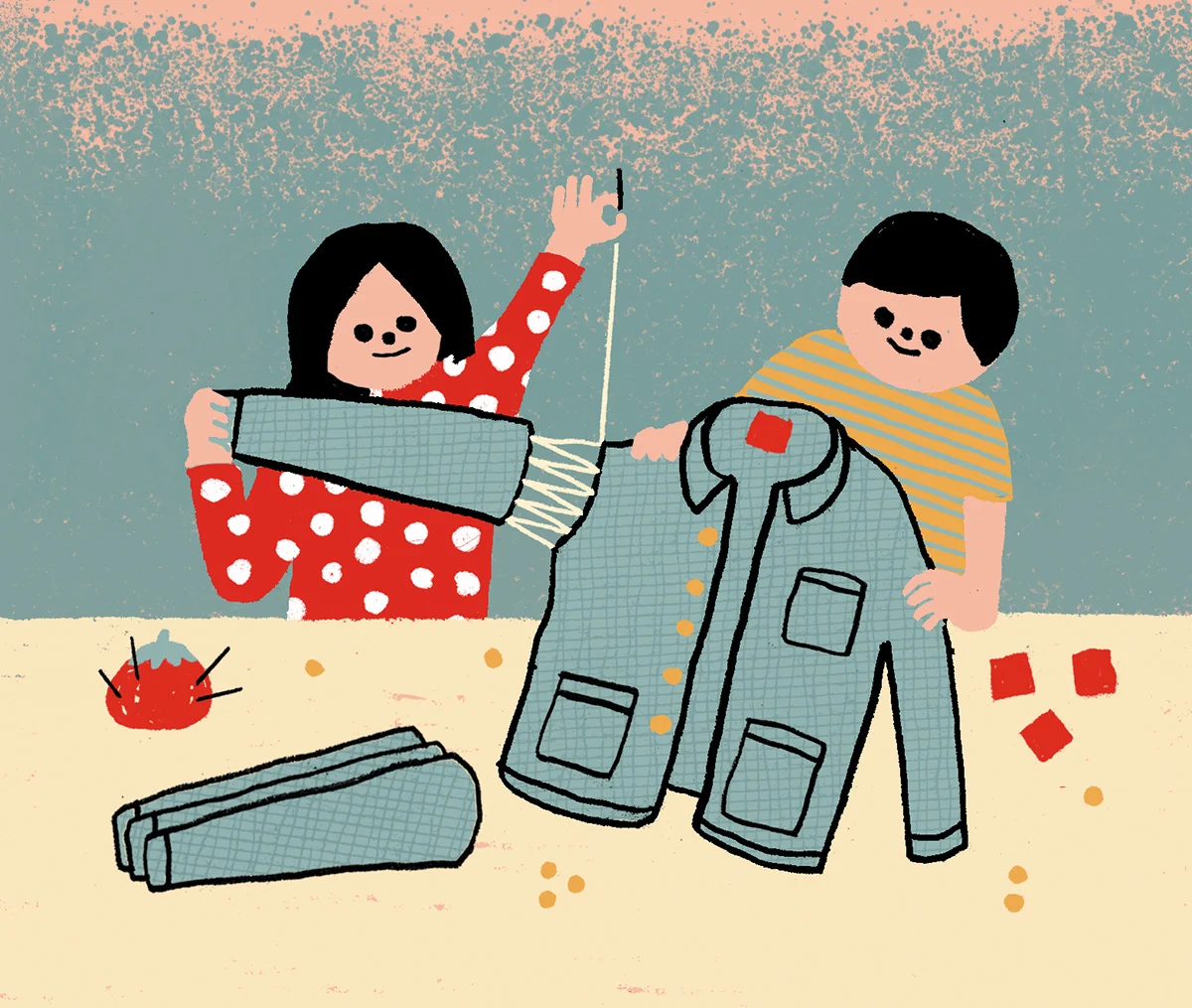
Be a generalist
“Don’t be too focused on your skill area,” say Becky and Huw. “If you’re a designer, you’re going to have to do a lot more than you used to when that was your full-time job. It’s good to be a generalist so you can use your skills while also feeling comfortable in all the other areas of starting a business. We’re still doing everything between the two of us, from design and marketing to logistics, finance and strategy.”
When LinYee started Mold she was in charge of writing and commissioning all of the platform’s editorial, hired and art directed designers and web developers to build her a custom website, and managed all of her social media feeds. When it was time to launch the print magazine she took charge of production management and distribution, working closely with a printer in Estonia to ensure the quality of the product was just right and packing and mailing orders on a weekly basis from her studio.
She still handles the majority of these roles herself, although over time she’s relinquished overall control of the design direction to her collaborators, because “if you’re too controlling of the process then none of the happy accidents would happen, and those are the things that make the project fucking awesome.”
When you run a company, you have to do everything, all the time, until you get big enough to get staff.
Don’t quit your day job just yet
Chris kept working for record labels until Upset The Rhythm could pay him a wage, Huw and Becky didn’t leave their jobs until they could guarantee a proper income from Paynter, and LinYee still teaches at Parsons School of Design and works for clients like A24 and Netflix to supplement her magazine income.
“It's important that there’s no smoke and mirrors about any of this,” says LinYee. “I want people to understand that Mold is a labor of love.”
“Working full-time while starting Paynter – and even until we were working on the third batch of jackets – meant that we weren’t reliant on the company to stand on its own too soon,” says Becky. “It meant making decisions based on creativity, not finances, which is healthy, especially in the early days when everything you do defines the brand you’re creating. We’re both fairly impatient and want to see results quickly, but good things take time.”





